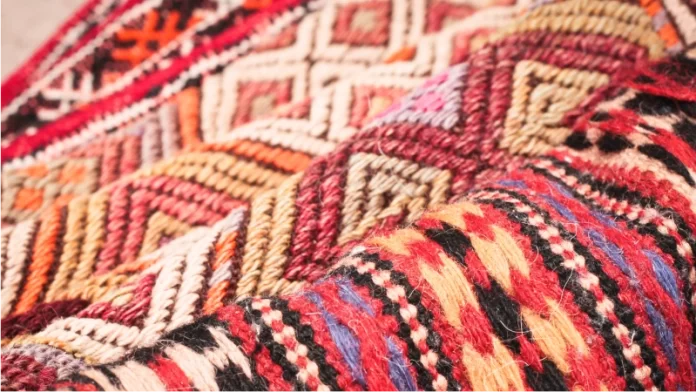Nepal’s carpet industry, once a leading source of foreign currency earnings, is experiencing a remarkable resurgence as it records an all-time high in exports. In the first 11 months of the fiscal year, carpet exports reached an impressive Rs10.32 billion, indicating a promising revival in the sector. The resurgence is attributed to increased demand for hand-woven woollen carpets, which have been a cornerstone of Nepal’s economy for decades.
The growth in Nepal’s carpet exports can be attributed to various factors, including inflationary pressures and rising costs of raw materials. While these factors have certainly contributed to the increased value of exports, the surge in volume suggests that the carpet industry is indeed making a significant comeback, according to both exporters and manufacturers.
The COVID-19 pandemic disrupted global supply chains over the past three years, leading to a surge in demand for Nepali carpets in overseas markets. This increased demand has boosted the carpet industry’s performance and reinforced its position in the global market.
According to the Trade and Export Promotion Centre’s statistics, the value of carpet shipments in the review period ending in mid-June 2023 increased by 20 percent year-on-year, reaching 444,365 square meters, marking an 11.25 percent year-on-year increase in volume.
Ram Bahadur Gurung, the president of the Nepal Carpet Manufacturer and Exporter Association, expressed optimism about the industry’s revival, emphasizing that with government support, the sector could reach annual exports worth Rs30 billion, which would significantly benefit Nepal’s trade balance.
Carpets were once the backbone of Nepal’s exports, peaking in the 1990s when the industry accounted for 65 percent of the country’s total exports. During this “Gold Rush” period, the carpet industry provided gainful employment to 250,000 to 300,000 individuals, benefiting rural communities and drawing people from remote areas to Kathmandu.
Nepal’s carpet industry had its first export boom in 1976, but it faced alternating periods of prosperity and decline. One significant setback was the revelation of child labor exploitation in carpet factories, which tarnished the industry’s reputation. Additionally, the global economic downturn resulting from the 2007-2009 financial crisis and political instability in Nepal further eroded the industry’s fortunes.
However, recent indicators suggest a resurgence is underway. Carpets now account for 7.2 percent of Nepal’s total exports in the first 11 months of the fiscal year. The current export price per square meter exceeds $175, up from $165 a few years ago, reflecting growing demand from international buyers, particularly in the US and European markets.
The quality of raw materials, including Chinese silk, pashmina, hemp, nettle, and allo, plays a vital role in the renewed demand. Manufacturers now import woollen yarn from New Zealand and China, and the use of high-quality materials has raised production costs. Nevertheless, the superior quality and craftsmanship ensure that Nepali carpets remain highly sought after.
To sustain this positive momentum, industry leaders and experts emphasize the need for government support. Infrastructure for carpet exports and access to loans at favorable interest rates are among the key factors for long-term success.
Nepali carpet exporters currently receive a 5 percent cash incentive, and the product is listed under the Nepal Trade Integrated Strategy 2016, which supports the industry’s growth. With nearly 800 carpet factories operating across the country, employing 200,000 individuals, it is evident that the carpet industry has the potential to become a significant contributor to Nepal’s economy.
In the face of another global economic slowdown, the rising demand for Nepali carpets underscores the industry’s bright future. As Bhim Bahadur Tamang, a seasoned carpet manufacturer, explains, the emphasis on quality materials, including Chinese silk and pashmina, sets Nepali carpets apart. Despite the higher production costs, superior craftsmanship and skilled workers enable Nepali carpet manufacturers to meet the diverse design preferences of global customers.
The resurgence of Nepal’s carpet industry is not only a testament to the quality and craftsmanship of its products but also a reminder of the potential for economic growth and job creation that this iconic industry can offer to the country. With the right support and policies in place, the carpet industry is poised for continued success in the international market.




